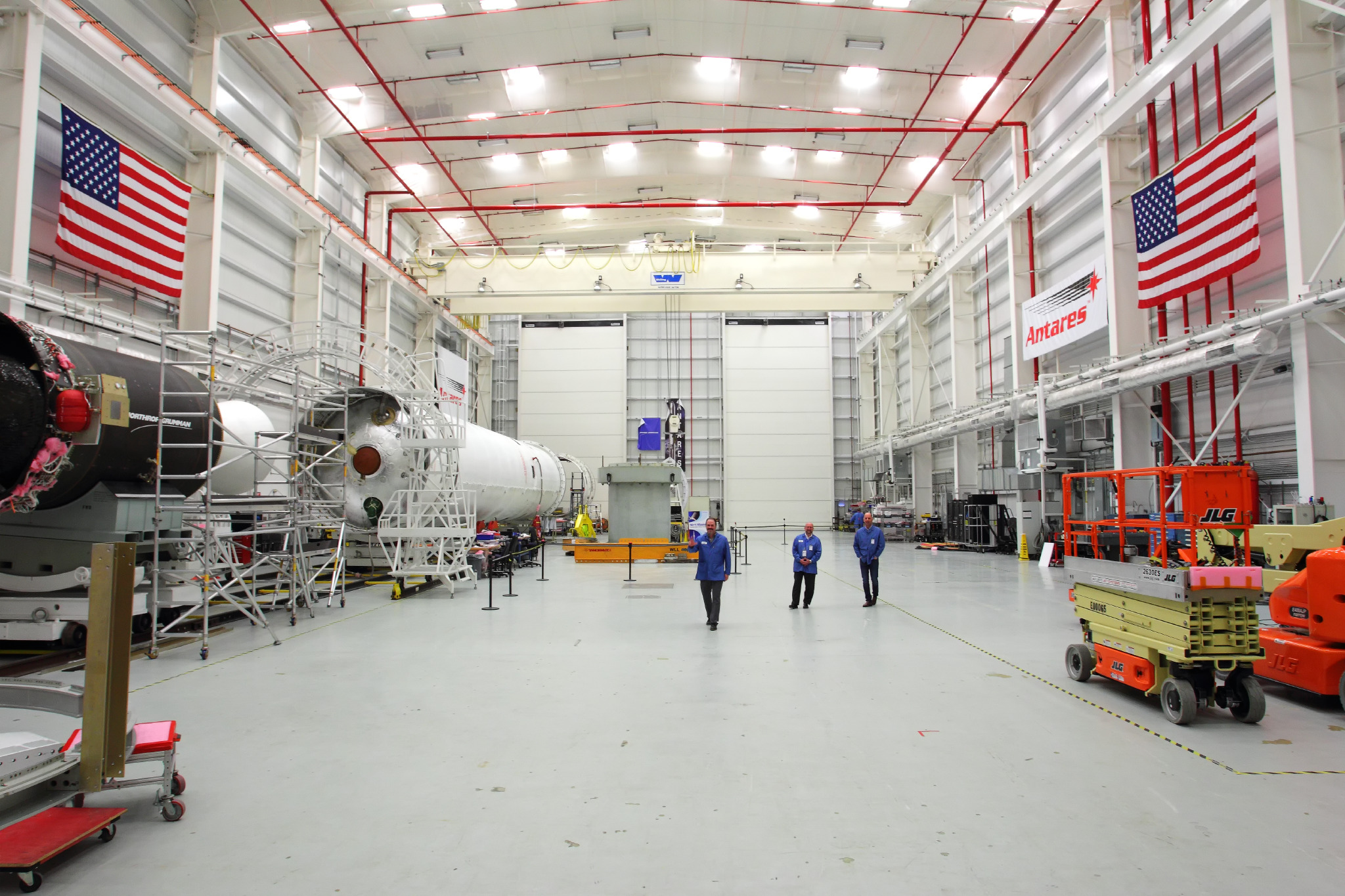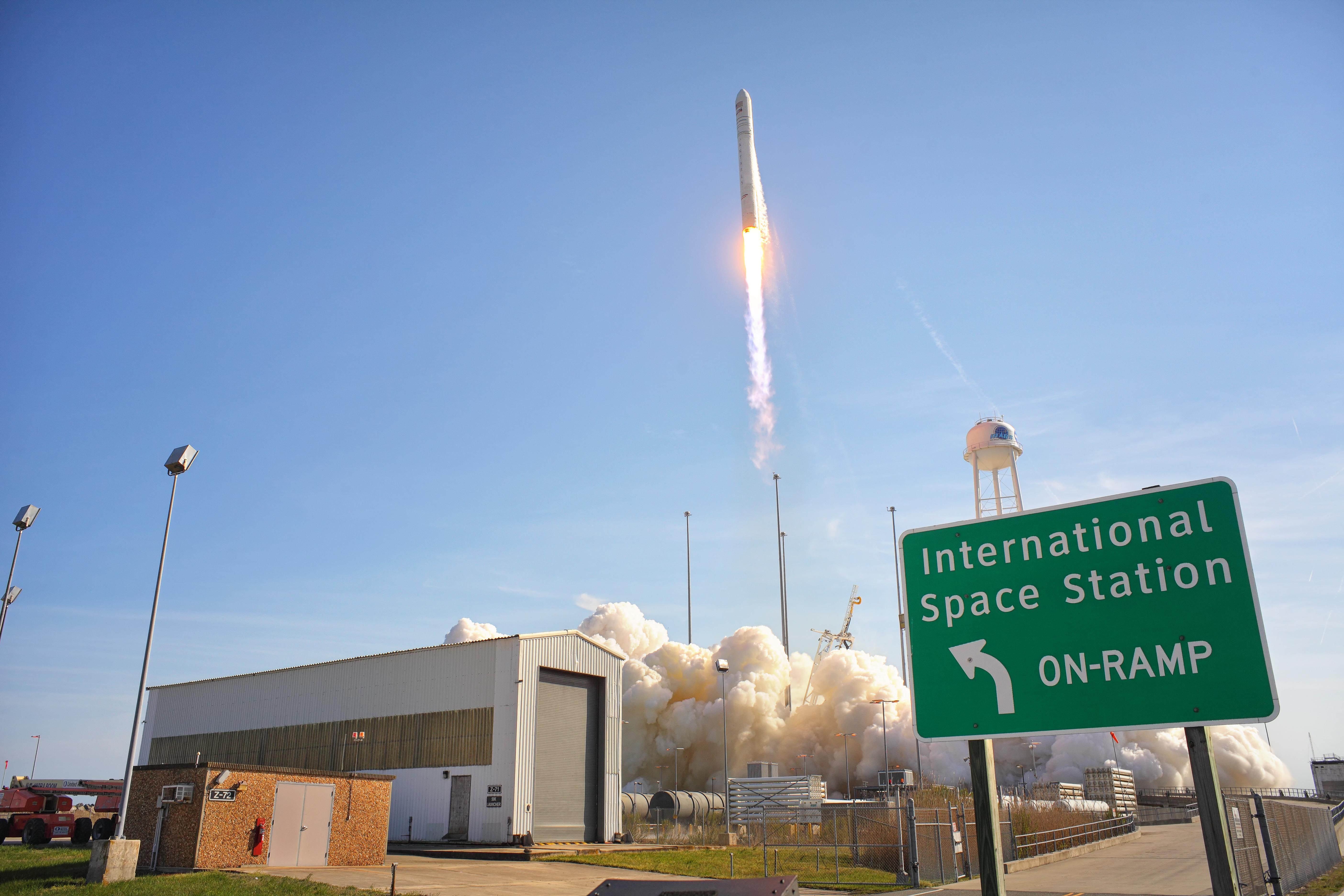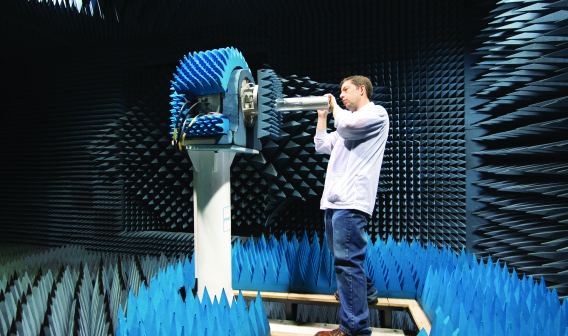Opening the Final Frontier at the Wallops Flight Facility
On a chilly, cloud-streaked day in February, a 133-foot-tall rocket sat on a launchpad, venting steam from its liquid oxygen tanks. With the Atlantic Ocean tumbling against a beach just a stone's throw away, a flight director counted down to liftoff.
At “Ignition,” the rocket’s two first- stage engines erupted fire.
A second later, the pad’s hold-down clamps released the rocket, and it thundered into the sky. Onboard were 7,500 pounds of equipment and supplies bound for the International Space Station. It was the 13th cargo mission to the orbiting outpost to lift off from this spaceport on the Eastern Seaboard of the United States.
No, this isn’t Cape Canaveral on the Florida coast. It’s a lesser-known, but no less critical, launch site up the coast on Virginia’s Eastern Shore: the Wallops Flight Facility. It’s NASA’s only launch range, which is the authority responsible for flight safety and approval for launches (Cape Canaveral’s launch range falls under the 45th Space Wing of the Space Force), and it’s a significant economic engine for the region. It’s also growing.
A Unique National Asset
“We think our facility is a unique national asset — for NASA and the nation,” says NASA’s Dave Pierce, director of the Wallops Flight Facility. The facility serves not just NASA, but tenants that include the Navy, the National Oceanic and Atmospheric Administration, and the Federal Aviation Administration.
The Mid-Atlantic Regional Spaceport (MARS), a commercial space launch facility, has made its home at Wallops since its establishment in 1995. “The space race today isn’t between countries,” Pierce says of the significance of the commercial nature of the spaceport. “It’s between commercial entities vying for commercialized space.”
Altogether, Wallops directly employs 1,940 people. An estimated additional 4,152 people work in the surrounding area as a direct result of activity at Wallops. The community is expanding as MARS adds more commercial space flights, including an upcoming mission to the moon.
It all started with suborbital sounding rocket launches.
Research and Rockets
In 1945, NASA’s predecessor organization, the National Advisory Committee for Aeronautics (NACA), established the Pilotless Aircraft Research Station on Wallops Island. There, it began launching rockets with scale models of aircraft on top. In the absence of modern wind tunnels and computational fluid dynamics, the rockets let engineers study the supersonic aerodynamics and heating characteristics of their designs.
After NACA became NASA in 1958, suborbital launches out of Wallops supported the fledgling space program. A couple of rhesus monkeys, Sam and Miss Sam, flew rockets from Wallops in 1959 and 1960, respectively, to test systems for the Mercury spacecraft and pave the way for America’s first astronauts. Those astronauts reached space from Cape Canaveral in 1961. That same year, the first orbital launch from Wallops carried the Explorer 9 satellite aloft on a mission to study the upper atmosphere.
The Wallops Flight Facility got its present name after NASA’s Goddard Space Flight Center in Greenbelt, Md., took it over in 1981. Suborbital rockets still take flight from Wallops on research and technology development flights. Wallops also manages high-altitude balloon flights. The NASA Scientific Balloon Program Office, based at Wallops, plumbs the depths of the cosmos with cosmic ray detectors and other instruments launched from sites around the world.
More recently, commercial rockets have ushered in the latest era of space flight from Wallops.
The Next Business Frontier
In 2010, President Barack Obama committed the nation to using commercial services to reach low earth orbit and the International Space Station. The following year, NASA retired the Space Shuttle.
The year after that, SpaceX, rocketing out of Cape Canaveral, delivered the first commercial cargo vehicle to the International Space Station. And, in 2013, the first cargo mission to Space Station lifted off from Wallops, flown by Dulles-based Orbital Sciences Corporation with an Antares rocket carrying a robotic Cygnus supply vessel.
Orbital has since been acquired by Northrop Grumman, but Antares rockets, like the one that lifted off in February, still launch from Pad 0A at Wallops. Rockets like the one flown by MARS’s newest tenant, Rocket Lab.
Small Is Beautiful
In March, next to Pad 0A on Launch Complex 2, a 55-foot-tall Electron rocket fired up its nine 3D-printed first-stage engines. The engines roared, putting out 34,000 pounds of thrust, but pad clamps held the rocket firmly in place for the duration of the burn. The test was the culmination of a series of checkouts of the rocket and its new pad, and a dress rehearsal for the upcoming launch of an Air Force satellite.
Rocket Lab began construction of its pad at Wallops, the company’s second launch pad, in February of 2019. Construction crews completed it that December. By then, the Electron had proven itself over the course of 10 successful missions to orbit from its launch site in New Zealand. The rocket now filled a critical role in the space flight: providing regular, dedicated launches for satellites under 500 pounds.
“Small satellites present significant opportunities to commercial and government operators alike,” Rocket Lab CEO Peter Beck explained. Among other benefits, Beck said, “Small satellites also represent enormous potential for communications, with constellations poised to provide internet access to remote corners of the globe.”
Until Rocket Lab opened for business in 2017, small satellites had to share rides with other spacecraft on big rockets, limiting opportunities for launch and the orbits they could reach. With a smaller, more affordable launcher, “Rocket Lab has put small satellite operators in control for the first time,” Beck said.
Ticket to the Moon
Moving forward, Rocket Lab plans to launch, on average, about a rocket a month between its two sites at Wallops and in New Zealand. One of those future launches will be a NASA lunar mission. The Cislunar Autonomous Positioning System Technology Operations and Navigation Experiment (CAPSTONE) satellite will orbit the moon in support of future human flight. It’s scheduled for launch from Wallops early in 2021.
CAPSTONE will be only the second lunar mission to lift off from Wallops. The first, launched on an Orbital Sciences Minotaur V rocket in 2013, was the Lunar Atmosphere and Dust Environment Explorer mission. “That put an 800-pound satellite from right out of Virginia circling the moon,” said Dale Nash, executive director of the Virginia Commercial Space Flight Authority, which owns and operates MARS. “And the next mission to the moon will come out of Wallops.”
Looking to the Future
Nash is justifiably proud of MARS’s role in opening the final frontier. And, he says, there’s more to come. “We want to bring in the small- to medium-class launch vehicles with the capability to be flexible and turn things around quickly,” Nash says. “There are a lot of new launch providers out there, and we are in discussions with several.”
For his part, Pierce sees the cooperation between government and private entities as the key to the success of the Wallops Flight Facility. “We like to say that we’re one of the best examples of a public-public-private partnership,” he says. “NASA, of course, is public. MARS is public — it’s part of the state of Virginia. And these private companies form this public-public-private partnership.”
All of which will keep Virginians looking up far into the future. Way up.






